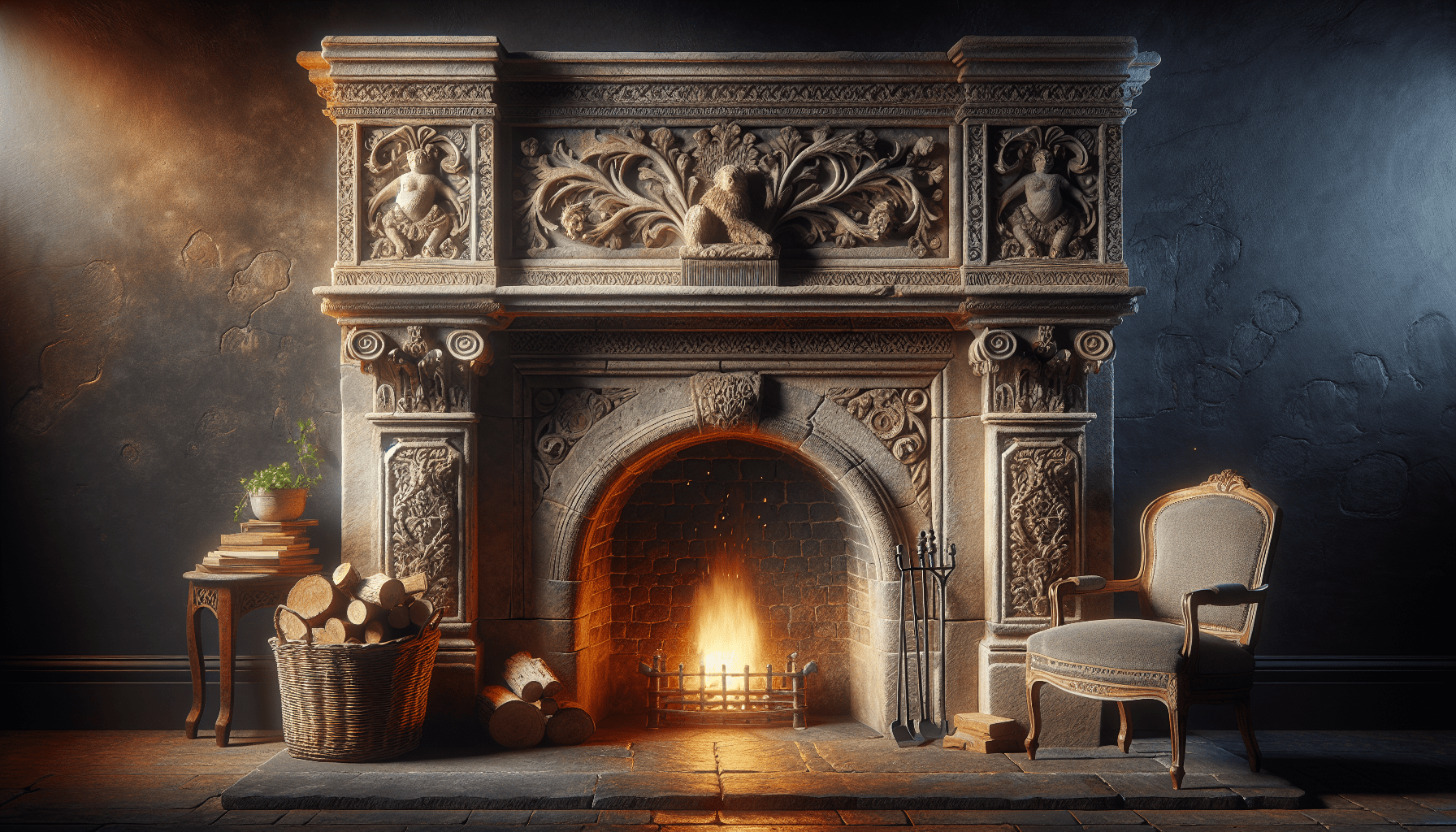Have you ever wondered how the fireplaces we enjoy today came into existence?
The Birth of Fireplaces: Ancient Times
From the very beginning, humans have been drawn to fire. The earliest examples of fireplaces date back to prehistoric times when our ancestors used open flames for warmth and cooking. These rudimentary hearths were often simple pits located in caves or outdoor spaces. As you can imagine, the flickering glow of a fire was not just functional; it created a sense of safety, community, and comfort.
The layout was straightforward: gather some stones, clear a ground area, and you had a spot for flames. Picture early humans sitting around a fire, sharing food and stories, the flames dancing, casting shadows on cave walls. It wasn’t fancy, but it was essential—a pivotal moment that shaped human interaction and survival.
The Hearth of the Home: Middle Ages
As time progressed, so did the design of fireplaces. In medieval Europe, the fireplace became the heart of the home, transitioning from mere warmth to a vital cooking source. Castles and large homes featured substantial stone hearths; imagine a massive, rugged cozy area designed to accommodate large pots and pans over an open fire.
These medieval fireplaces weren’t just functional; they were elaborate structures often adorned with intricate stonework and carvings. Families gathered around these central hearths, their versions of modern-day living rooms. The fireplace became a gathering spot, a place where bonds were formed, much like when you and your friends huddle around your favorite fireplace on a chilly evening.
The Renaissance: Style and Functionality
The Renaissance brought about a transformation not just in art and science, but also in the design of fireplaces. Fireplaces started to reflect the personalities and tastes of their owners. People wanted more than just to stay warm or cook meals; they craved elegance.
You would see embellishments like decorative mantels and painted tiles, often showcasing scenes from mythology or local landscapes. These fireplaces weren’t just sources of heat; they expressed status. A beautifully designed fireplace could speak volumes about a family’s wealth and sophistication. You could almost envision the noble families of the time, proudly entertaining guests in grand rooms, each fireplace a statement piece.
The Rise of the Chimney
As the Renaissance continued, the development of chimneys revolutionized home heating. Previously, smoke from fires would fill living spaces, creating discomfort. Now, with the introduction of chimneys, the smoke could escape, improving air quality inside the home. Can you imagine the relief? No more coughing or smoke-filled rooms – just warmth without the discomfort.
The Industrial Revolution: Mass Production and Innovation
With the Industrial Revolution came a surge of innovations, and fireplaces were no exception. Iron and other industrial materials replaced stone in many designs. You might think, “What’s the big deal about that?” Well, the mass production of fireplace materials made it more accessible for the average person to enjoy the comforts of a fireplace in their home.
Cast-iron stoves began to replace traditional open flames in many households. These stoves efficiently heated rooms and were safer than open fires. Still, the charm of a traditional fireplace remained appealing. Families still gathered around the flickering flames, sharing stories and laughter, but now they were doing so in a safer, more efficient environment.
The 20th Century: Modernity and New Materials
As the 20th century approached, fireplaces underwent yet another transformation. Gas and electric fireplaces entered the scene, offering the warmth and aesthetic of traditional wood-burning fireplaces but with added convenience. Imagine coming home after a long day, flipping a switch, and instantly having a cozy fire without the hassle of gathering wood and building a blaze.
These innovations moved fireplaces from a necessity to a luxury in many cases. A contemporary home might incorporate stylish, minimalist gas fireplaces as focal points in living spaces rather than large, traditional hearths. The ambiance remained, but the function evolved, allowing homeowners to express their unique style through their choice of fireplace.
The Revival of Wood-Burning Fireplaces: Eco-Friendly Trends
While modern conveniences flourished, an interesting shift began. In recent years, there has been a resurgence of interest in traditional wood-burning fireplaces. People are turning to natural, sustainable materials and cherishing the nostalgia that comes with them. Picture families lovingly collecting logs or sourcing local wood species, all while savoring the unique experience of creating a genuine fire.
Sustainable Heating: A Return to Our Roots
This trend is rooted in a greater awareness of environmental issues. Many homeowners are opting for eco-friendly designs, utilizing responsibly sourced wood and high-efficiency fireplaces that minimize emissions. Think about how you, too, can contribute to a greener planet while enjoying the comforting crackle of burning wood.
This rekindling of interest in traditional wood-burning fireplaces emphasizes that, sometimes, the old ways can be the best. Wood offers an authentic warmth and aroma that gas and electric options can only imitate, connecting you to the essence of a bygone era.
Designing Fireplaces for Modern Living
Fireplaces today are as diverse as the people who own them. Modern designs cater to various tastes, from sleek, contemporary lines to cozy, rustic aesthetics. You might be in love with the idea of a minimalist fireplace that blends seamlessly with your décor, or perhaps you adore the vintage charm of a Victorian-style hearth—there’s something for everyone.
Different Types of Fireplaces
To illustrate just how varied fireplaces can be, here’s a quick rundown of popular styles:
| Type of Fireplace | Description |
|---|---|
| Wood-Burning | Traditional and nostalgic, using logs for authentic warmth. |
| Gas | Convenient and easy to use; they provide flame without ash. |
| Electric | Offer instant heat and no smoke; ideal for small spaces. |
| Pellet | Utilizes compressed wood pellets; energy-efficient and eco-friendly. |
| Ethanol | Clean-burning and portable; no need for flue or chimney. |
These various types open up a world of possibilities for homeowners. Whether you love the feel of a crackling fire or prefer the convenience of turning on a switch, the options cater to your lifestyle and preferences.
Fireplace Safety: Keeping the Flames in Check
As you indulge in the comfort and beauty of a fireplace, it’s essential to keep safety in mind. Fireplaces can add warmth to your home, but they also come with risks. Here are a few straightforward tips to ensure your fireplace remains a safe haven:
-
Regular Maintenance: Schedule a yearly inspection of your chimney and fireplace to avoid buildup. Creosote, a byproduct of wood burning, can ignite if not cleared away.
-
Use a Screen: Installing a protective screen can prevent sparks from escaping and minimizes the risk of accidental fires.
-
Keep Flammable Materials Away: Ensure that furniture, curtains, and other flammable items are positioned at a safe distance from the fireplace.
-
Proper Wood Storage: Store firewood outside, covered and elevated to help keep pests at bay.
-
Install Carbon Monoxide Detectors: Especially essential for gas and wood-burning fireplaces, to prevent harmful fumes from accumulating indoors.
By taking these precautions, you can enjoy your fireplace worry-free, knowing you’ve minimized risks while maximizing comfort.
Conclusion: An Ever-Evolving Comfort
Fireplaces have come a long way from their modest beginnings back in prehistoric times. They embody not just the history of human innovation but also the warmth of human connection. Whether you gather around a roaring wood fire, enjoy the convenience of gas, or bask in the glow of electric flames, fireplaces continue to play a vital role in our homes.
As you cozy up to your fireplace, remember that you are part of a long and rich tradition, where generations before you have found warmth, safety, and togetherness. Isn’t it amazing to think about the stories the flames have witnessed over the centuries? So, whether you’re enjoying a quiet evening or hosting friends, remember to appreciate the history behind the modern comfort of your very own fireplace.

